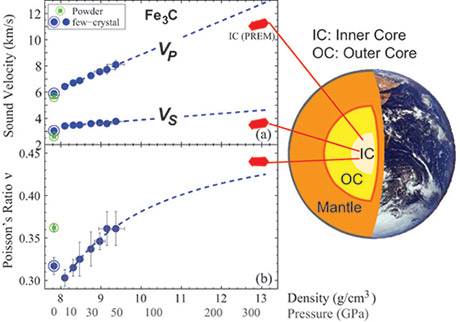Is Carbon Responsible for the Anisotropy in the Earth’s Inner Core?
Posted: Tue, 2009-09-15 14:16

The Earth’s inner core is seismically anisotropic: compressional sound waves travel 3-4% faster along the spin axis than in the equatorial plane. The cause of the anisotropy has been generally attributed to referential alignment of iron crystals. The density of the inner core is smaller than pure iron under corresponding pressure and temperature conditions, presumably due to the presence of lighter elements such as H, C, O, Si or S. In this study, we measured the compressional and shear wave velocities of Fe3C using nuclear resonant inelastic X-ray scattering in conjunction with X-ray diffraction experiments. Our results indicate that compared to pure iron, Fe3C provides a better match of compressional and shear wave velocities to the seismically observed values of the inner core, supporting carbon as a light element in the inner core. We observed large elastic anisotropy in Fe3C at ambient conditions. If the anisotropy persists to the pressure and temperature conditions of the inner core, Fe3C might help explain the observed seismic anisotropy.
Download summary
Download article
